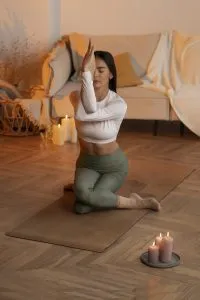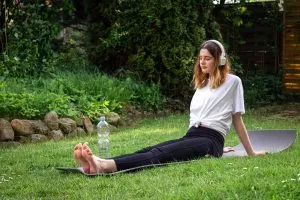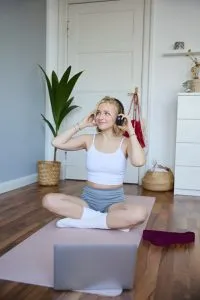Picture this – You walk into your first yoga class, excited and maybe a little nervous. The instructor starts rattling off Sanskrit names, and suddenly you’re wondering if you accidentally signed up for advanced quantum physics instead of yoga. Sound familiar?
If you’ve ever felt overwhelmed by the sheer number of different yoga styles out there, you’re not alone. I remember standing in the lobby of my local studio, staring at a class schedule that looked like it was written in code: “Vinyasa Flow,” “Yin Restorative,” “Hot 26+2” – what did any of it mean?
The truth is, yoga isn’t a one-size-fits-all practice. It’s more like a buffet with something delicious for everyone – whether you’re dealing with chronic back pain, looking to build strength, or simply trying to find a moment of peace in your chaotic day.
In this detailed guide, we’ll break down the most popular different yoga styles, help you understand what makes each unique, and most importantly, guide you toward finding the perfect match for your body, goals, and lifestyle. No Sanskrit dictionary required.
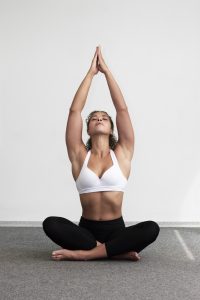
Why Understanding Different Yoga Styles Matters
Before we dive into the specific styles, let’s talk about why this matters. Choosing the wrong yoga style is like trying to use a hammer when you need a screwdriver – it might work eventually, but it’s going to be frustrating and potentially counterproductive.
Each yoga style has its own personality, intensity level, and benefits. Some are designed to make you sweat and build serious strength, while others focus on deep relaxation and stress relief. Understanding these differences can mean the difference between falling in love with yoga and giving up after two classes.
The key is matching your goals with the right practice. Are you looking to increase flexibility? Build strength? Reduce anxiety? Recover from an injury? Your answers will guide you toward the perfect yoga style.
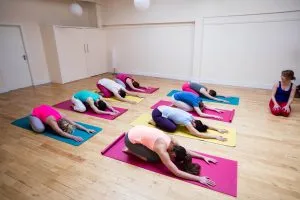
Types of Yoga for Beginners: Where to Start Your Journey
Hatha Yoga: The Gentle Introduction
If yoga styles were cars, Hatha yoga would be that reliable family sedan – steady, predictable, and perfect for learning the basics. This style focuses on holding poses (called asanas) for several breaths, giving you time to understand proper alignment without the pressure of flowing from one pose to another.
What makes Hatha special for beginners:
- Slower pace allows you to really understand each pose
- Clear instruction on proper alignment
- Less intimidating than faster-moving styles
- Builds foundational strength and flexibility gradually
I always recommend Hatha to my friends who are just starting their yoga journey. It’s like learning to walk before you run – you’ll build confidence and body awareness that will serve you well in any other style you try later.
For more information about Hatha Yoga read this Journal of Physical Therapy Science: “Effects of Hatha yoga on well-being in healthy adults“.
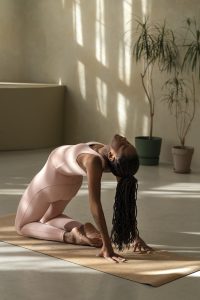
Yin Yoga: The Art of Slowing Down
In our fast-paced world, Yin yoga is like a gentle rebellion against the hustle culture. This practice involves holding poses for 3-5 minutes (sometimes longer), allowing your muscles to relax while gently stretching deeper connective tissues.
Think of Yin as meditation in motion – or rather, meditation in stillness. It’s perfect for beginners who are dealing with stress, insomnia, or anyone who spends long hours sitting at a desk.
Benefits of Yin yoga:
- Improves flexibility without force
- Calms the nervous system
- Enhances mental focus and patience
- Complements more active forms of exercise
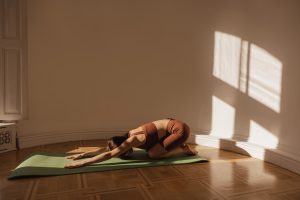
Dynamic and Flowing Styles: When You’re Ready to Move
Vinyasa Flow: The Dance of Breath and Movement
Vinyasa yoga is like a moving meditation where each movement is synchronized with your breath. One moment you’re in downward dog, the next you’re flowing into warrior pose – it’s yoga’s answer to choreography.
This style is incredibly popular because it offers variety. No two Vinyasa classes are exactly the same, which keeps things interesting and prevents boredom. It’s also highly adaptable – instructors can make it gentler for beginners or more challenging for advanced practitioners.
What to expect in Vinyasa:
- Flowing sequences that link breath with movement
- Creative variations of traditional poses
- Moderate to high intensity depending on the instructor
- Focus on building heat and cardiovascular fitness
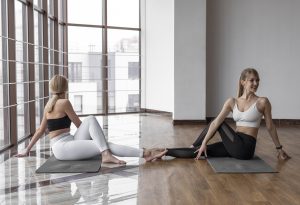
Ashtanga Yoga: The Athletic Challenge
If Vinyasa is like dancing, Ashtanga yoga is like training for the Olympics. This traditional style follows a specific sequence of poses performed in the same order every time. It’s physically demanding, requires dedication, and builds incredible strength and flexibility.
Ashtanga practitioners often develop an almost devotional relationship with their practice. There’s something powerful about mastering a challenging sequence through consistent effort and patience.
Who Ashtanga is perfect for:
- Athletes looking for a challenging cross-training activity
- People who thrive on routine and measurable progress
- Those seeking a traditional, disciplined practice
- Anyone wanting to build serious physical and mental strength

Alignment-Focused Practices: Precision Meets Purpose
Iyengar Yoga: The Science of Alignment
Iyengar yoga is like having a master craftsman teach you the fine art of pose construction. Founded by B.K.S. Iyengar, this style emphasizes precise alignment and often uses props like blocks, straps, and bolsters to help students achieve proper form.
This style is fantastic for people recovering from injuries or those who want to understand the deeper mechanics of each pose. It’s also excellent for perfectionists who enjoy detailed instruction and gradual progression.
Key features of Iyengar:
- Extremely detailed alignment cues
- Generous use of props to make poses accessible
- Longer holds to develop strength and awareness
- Therapeutic approach that can help with specific health issues
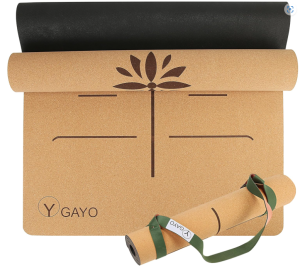
Therapeutic and Restorative Approaches
Restorative Yoga: The Ultimate Reset Button
Sometimes the most powerful thing you can do is absolutely nothing. Restorative yoga is about creating the perfect conditions for your body to heal and your nervous system to reset.
Using props like bolsters, blankets, and blocks, you’ll settle into deeply supportive poses that you can hold for 10-20 minutes. It might sound boring, but don’t underestimate the profound effects of giving your body permission to completely let go.
Perfect for:
- Managing chronic stress or anxiety
- Recovering from illness or injury
- Improving sleep quality
- Balancing more active forms of exercise
Hot Yoga: Healing Through Heat
Hot yoga (including Bikram yoga) takes place in a heated room, typically around 95-105°F with high humidity. The heat serves several purposes: it helps muscles relax and stretch more easily, promotes detoxification through sweating, and creates a challenging environment that builds mental resilience.
The heat isn’t for everyone, but those who love it often become devoted practitioners. There’s something transformative about moving through challenging poses while dealing with the additional element of heat.

Choosing the Right Yoga Style for Your Goals
Best Yoga Style for Flexibility
If increasing flexibility is your primary goal, Yin yoga and Hot yoga are your best bets. Yin targets deep connective tissues that often get neglected in other forms of exercise, while the heat in hot yoga helps muscles relax and stretch more easily.
However, don’t overlook Hatha yoga for flexibility. Its slower pace allows you to work mindfully with tight areas without forcing or straining.
For Stress Relief and Mental Health
Restorative yoga and Yin yoga are powerhouses for stress relief. Both practices activate the parasympathetic nervous system – your body’s “rest and digest” response – which is crucial for managing anxiety and improving overall mental health.
Vinyasa flow can also be excellent for stress relief because the focus on breath and movement creates a moving meditation that helps quiet mental chatter.
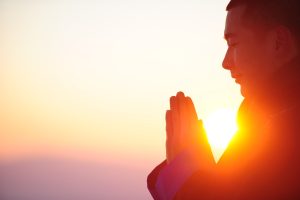
For Building Strength and Endurance
Ashtanga and Power yoga are unmatched for building physical strength and endurance. These styles challenge your cardiovascular system while building lean muscle throughout your body.
Vinyasa flow offers a middle ground – you’ll build strength while maintaining the flowing, meditative quality that makes yoga unique.
How to Choose Your First Class
Consider Your Current Fitness Level
Be honest about where you are right now. If you’re new to exercise, jumping into an advanced Ashtanga class might leave you feeling defeated rather than inspired. There’s no shame in starting with gentler styles and building up.
Think About Your Goals
Are you looking to:
- Reduce stress and anxiety? Try Restorative or Yin
- Build strength and flexibility? Consider Vinyasa or Hatha
- Challenge yourself physically? Explore Ashtanga or Hot yoga
- Work with an injury? Look into Iyengar or therapeutic classes
Don’t Be Afraid to Try Different Styles
Your yoga journey doesn’t have to be monogamous. Many practitioners enjoy different styles for different purposes – maybe Yin on stressful days and Vinyasa when you want to move and sweat.

Tips for Your First Classes
Come early to introduce yourself to the instructor and mention that you’re new. Most teachers are happy to offer modifications and extra guidance.
Listen to your body above all else. Yoga should challenge you, but it shouldn’t cause pain. Learn the difference between the discomfort of stretching tight muscles and the sharp sensation that signals potential injury.
Leave your ego at the door. Everyone was a beginner once, and the person doing an impressive arm balance next to you probably couldn’t touch their toes when they started.
Common Mistakes to Avoid
Comparing Yourself to Others
This is perhaps the biggest trap new yogis fall into. Remember, yoga is called a “practice” for a reason – it’s about your personal journey, not about matching what the person next to you is doing.
Pushing Too Hard Too Fast
Flexibility and strength develop gradually. Trying to force progress often leads to injury and frustration. Trust the process and celebrate small improvements.
Skipping the Beginner Classes
Even if you’re athletic, yoga uses your body in unique ways. Those “boring” beginner classes teach fundamental principles that will benefit you throughout your entire yoga journey.
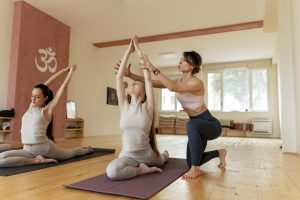
Frequently Asked Questions
What’s the difference between yoga styles and regular exercise?
Unlike traditional exercise that focuses primarily on physical fitness, yoga styles integrate physical postures with breath work, mindfulness, and often spiritual elements. This holistic approach offers benefits for mental health, stress reduction, and overall well-being that go beyond what you’d get from a typical gym workout.
How often should I practice different yoga styles?
For beginners, 2-3 times per week is ideal for building consistency without overwhelming your body. As you become more comfortable, you might practice daily, potentially mixing different styles based on your energy levels and needs. Listen to your body – some days you might need gentle Yin, while others call for energizing Vinyasa flow.
Can I practice different yoga styles if I have injuries or health conditions?
Many yoga styles can be adapted for injuries or health conditions, but it’s crucial to inform your instructor about any physical limitations before class. Iyengar and Restorative yoga are particularly well-suited for working with injuries due to their emphasis on proper alignment and use of props. Always consult with your healthcare provider before starting any new exercise routine.
Which yoga style burns the most calories?
Dynamic styles like Ashtanga, Power yoga, and heated Vinyasa classes typically burn the most calories due to their intensity and continuous movement. However, remember that calorie burn shouldn’t be your only consideration – the mental and emotional benefits of gentler styles can be equally valuable for overall health.
How do I know if a yoga style is right for me?
The right yoga style should leave you feeling energized (not depleted), gradually improve your flexibility and strength, and make you want to return to your mat. If you consistently feel frustrated, overwhelmed, or physically uncomfortable (beyond normal muscle soreness), it might be time to try a different style or instructor.
Your Yoga Journey Starts Now
Choosing from the many different yoga styles available doesn’t have to be overwhelming. Remember, there’s no “perfect” choice – only the style that feels right for you at this moment in your life.
Your needs will likely evolve as you grow in your practice. The gentle Hatha class that introduces you to yoga might eventually lead you to the dynamic flows of Vinyasa or the deep restoration of Yin practice. That’s not just okay – it’s exactly how it should be.
The most important step is simply stepping onto your mat. Whether you start with a beginner-friendly Hatha class, dive into the heat of a hot yoga session, or sink into the gentle stretches of Yin yoga, you’re beginning a journey that can transform not just your physical health, but your relationship with stress, your body, and yourself.
Ready to find your perfect yoga match? Start by trying one class from two different categories – perhaps a gentle Hatha class and a flowing Vinyasa session. Pay attention to how each makes you feel during and after practice. Your body will tell you what it needs.
Your yoga journey is uniquely yours. Trust the process, be patient with yourself, and remember – every master was once a beginner who refused to give up. Welcome to the wonderful world of yoga. Your mat is waiting.

